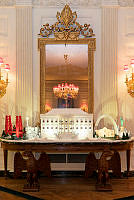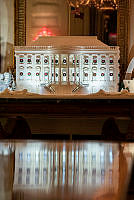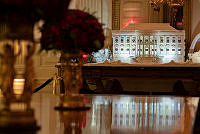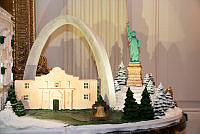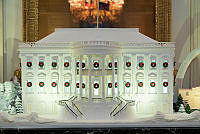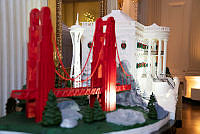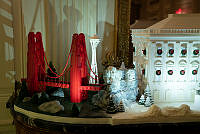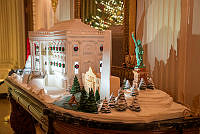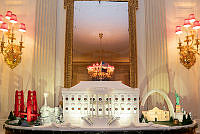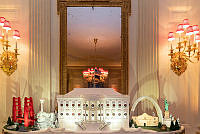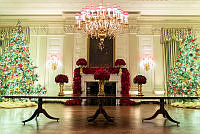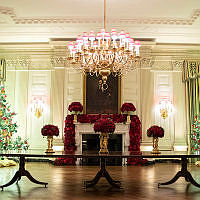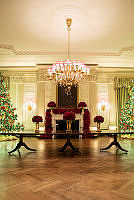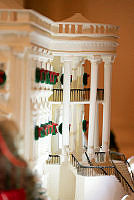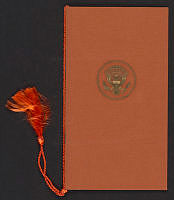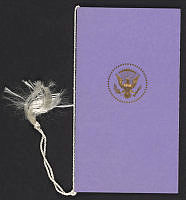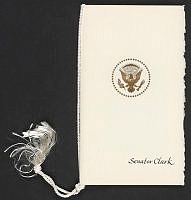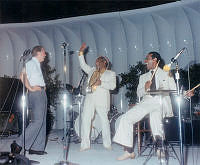Tensions in the Capital
Copyright © White House Historical Association. All rights reserved under international copyright conventions. No part of this article may be reproduced or utilized in any form or by any means, electronic or mechanical, including photocopying, recording, or by any information storage and retrieval system, without permission in writing from the publisher. Requests for reprint permissions should be addressed to books@whha.org
President James Madison arrived back in Washington about 5:00 p.m. on August 27, 1814 and took up temporary lodgings at the F Street home of his brother-in-law, Richard Cutts. James and Dolley Madison had lived there during 1801-1809 when he was secretary of state. On August 28 Dolley Madison returned to Washington, disguised in another woman's clothing (as directed by her husband), dejected at the destruction she saw and incensed at the British for what they had done. The atmosphere in the city was one of defeat. Anna Thornton remembered that there was "a general alarm ... as it is expected the [British] fleet will come up. And the sailors be let loose to plunder and destroy. The people are violently irritated at the thought of our attempting to make any more futile resistance."
On August 27 a British naval force attacked Fort Washington (also known as Fort Warburton), some eight miles below the capital and the linchpin defending the Potomac River approach to Washington. Faced with overwhelming enemy strength, Fort Washington's commander blew the fort up and withdrew his small force upriver. All of Washington heard the bombardment and its destruction sent a shiver of fear through the city. Would the British, after dealing with Alexandria, continue back up the Potomac and return for a second attack on the capital?
Disgust with the military and civilian authorities charged with protecting Washington was widespread, and Secretary of War Armstrong emerged as chief villain. Armstrong was hung in effigy at the burned-out Capitol with a sign reading ARMSTRONG THE TRAITOR.
As President Madison and Secretary of War Monroe inspected the ruins of the Navy Yard, Capitol and White House, angry citizens implored Madison to surrender if the British returned for a second attack. Madison refused and Monroe proclaimed that any overture toward negotiating Washington's surrender would be deterred by bayonets.

The Cutts House on F Street during the Civil War was the Sanitary Commission headquarters, ca. 1865.













